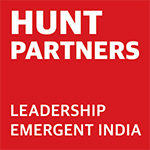Syed SafariChairman and CEO, Viom NetworksHunt
Syed Safawi has proved to be an exceptional turnaround artist. After successful stints with Amul, Coke, Airtel, Reliance Communications, when Syed joined Viom, the situation looked grim. With a debt of INR 8000 cr and a annual loss of INR 350 Cr, the jury was out on the outcome of this strategic hire made by the promoters. Cut to June 2014, Revenues at INR 5000 Cr, net profit crossed the Rs 100 crore-mark and debt has reduced by Rs 1,500 crore and the company is looking to have its maiden listing on the bourses.

1. What was the mandate given to you by the Board when you took over in your role?
India needs accommodation for 8 million migrant students and 35 million urban working professionals.
My mandate has been to create a high performance team and establish a benchmark high quality Student Housing and Co-Living rental housing platform as an integrated PropCo-OpCo that uplifts the quality of living for its residents delivering sustainable superior returns.
2. How much of that has been achieved?
The Hamstede rental housing platform was started as a JV between Warburg Pincus and Lemon Tree Hotels last year. We created a very capable multi-industry, multi-discipline team of talented CXOs and other colleagues.
This team has worked collaboratively to generate a unique low CapEx and low OpEx model for transforming brownfield, greenfield and conversion assets into purposeful living communities that deliver exceptional quality at ‘value for money’ price points.
We have developed a high efficiency design template and a unique brand architecture to serve the aspirational millennials (www.themove.in).
Hamstede today has relationships with key government and private universities, developers and landlords and a committed pipeline of 3 properties across Bengaluru, Hyderabad and Pune plus 36 assets in the pipeline.
3. What are the key challenges your organization is facing? Both immediate and long term. And what steps you are taking to overcome?
The key challenges are the high embedded cost of real estate, lack of regulatory clarity and archaic development norms.
We have worked on developing India specific solutions to these challenges that will long term enable a competitive moat to our business.
4. How have the Pandemic/technology/globalization/economy affected your sector?
The pandemic has effectively wiped out student housing for this year and hugely cut down the potential for white collar co-living over the next few quarters.
However as the pandemic abates it will render tail winds to accelerate the formalization of the unstructured rental housing market in India. Consumer preferences would gravitate to brands providing clean, safe, hygienic, hassle free, value for money accommodation combined with tasty, nutritious meals, reliable high speed WiFi and a community of like minded individuals.
5. What is your talent strategy? How do you draw the balance between home grown vs lateral hiring at the leadership level?
We look for leadership talent with a demonstrated track record and the potential and aspiration to grow.
Recruiting a start-up team for a nascent industry meant that we assigned heavier weights to collaboration and agility and were careful to onboard individuals who had the mental and physical stamina to sustain themselves in a high performance environment.
Home grown talent that met this criteria and was enthused with the opportunity to seed an enterprise was equally welcomed.
6. How does your organization identify and develop future leaders?
We essentially consider three identification criteria: Consistently superior performance, aspiration combined with the potential to grow and demonstrated collaboration at work.
Development is via focused mentoring, structured support in picking up new skills and competencies and cross functional responsibilities to learn and chisel on the job.
7. Every crisis is a learning opportunity, what lessons have you picked up from Covid?
Renewed focus on dropping fixed costs, not sign fixed leases and the importance of communication when remote.
8. In a world full of Volatility, Uncertainty, Complexity & Ambiguity (VUCA), innovation has become one of the most important factors to transform a crisis into an opportunity. How do you promote Innovation?
First have the team understand and align to the organizational purpose so that all individual actions are automatically directly to common shared goals. Then empower the team with data and tools, encourage beta roll outs, celebrate positive outcomes and treat negative variances as the cost of learning.
9. How do you define and practice leadership?
Leadership is the act of raising the organization up the Maslow to enable its true purpose i.e. contribution to society.
The leader’s actions are always amplified and constantly under a microscope. Therefore the leader needs to be centered in his/her energy and be mindful of the impact of his/her behavior in shaping organizational culture.
10. We see many Indian leaders on the global stage. How can more Indian leaders become Global Leaders?
Valuing people’s contribution, mutual respect and trust are global currencies. These combined with the Indian creed of education, adaptability and perseverance and the ethos of ‘Vasudeva Kutumbakam’ can serve as the passport for global leadership.
11. What are the 3 most pivotal moments in your career that you learned from and/or that got you where you are today?
- Learnt from my parents that truth always triumphs,
- Learnt at school that talent is no match for effort and
- Learnt from Patu Keswani to be cautious with leverage.
12. What message would you like to share with young professionals?
We are all born with expiry dates. Let us be thankful for our gifts, practice physical, mental and spiritual discipline and daily commit to delivering our best.
